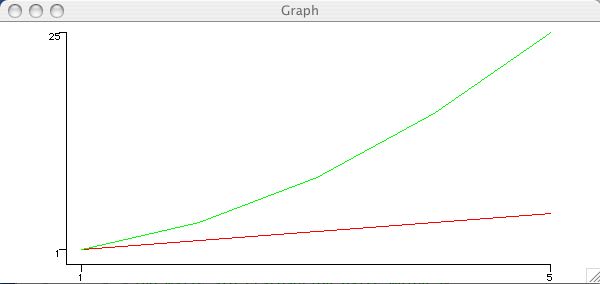
 |
Reinforcement Learning and
Artificial
Intelligence (RLAI) |
| Quickgraph
(2D and 3D graphing) |
from Quickgraph import *graph
in front - e.g. graph.graph(...), and the 3d ones with
module name graph3d in front - e.g. graph3d.graphSurface(...).from Quickgraph.graph import *from Quickgraph.graph3d import *gStartEventLoop()
to make your windows
visible and
interactive. python
>>>from Quickgraph.graph import *
>>>graph([[1, 2, 3, 4, 5], [1, 4, 9,
16, 25]])
>>>gStartEventLoop()

Of course if you have compiled these files you will want to leave off the "(load "ccl:library;quickdraw.lisp")
(load "g.lisp")
(load "graph.lisp")
(use-package :graph)
.lisp" on these files names.
